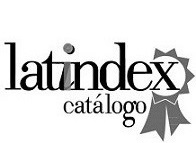Personal learning environments and YouTube audiovisual content among incoming university computing students
DOI:
https://doi.org/10.30972/dpd.13227889Keywords:
Initial university students, personal learning environment, YouTube audiovisual contentAbstract
Young people's learning is increasingly linked to multiple screens. During the COVID-19 pandemic, this immersion intensified and amplified, revealing the diversity of strategies and resources that young people deploy to learn and solve problems in their daily lives. It is identified that both the relationships with knowledge that take place in school and outside of it configure personal learning environments that allow them to advance in the construction of knowledge. In this paper we propose to characterize how young people build personal learning environments with digital tools, especially how such management allows us to glimpse the potential emergence of a new subject of knowledge. The role of YouTube audiovisual contents in the personal learning environments of students enrolled in a computer science university course in Argentina is characterized in a central way. Using a quantitative methodology, 233 surveys were conducted. The main findings indicate, on the one hand, that in addition to being entertained on YouTube, the students surveyed find and configure a diversity of answers to their main interests and student problems. On the other hand, both the channels they use and the resources managed there allow complex cognitive processes, such as abstracting and problem solving, among others.
Downloads
Published
How to Cite
Issue
Section
License
Copyright (c) 2024 Fernando Raúl Alfredo Bordignon, Lucila Dughera

This work is licensed under a Creative Commons Attribution-NonCommercial 4.0 International License.
La Revista De Prácticas y Discursos. Cuadernos de Ciencias Sociales solicita sin excepción a los autores una declaración de originalidad de sus trabajos, esperando de este modo su adhesión a normas básicas de ética del trabajo intelectual.

Este obra está bajo una licencia de Creative Commons Reconocimiento-NoComercial 2.5 Argentina.





52.jpg)


.png)




